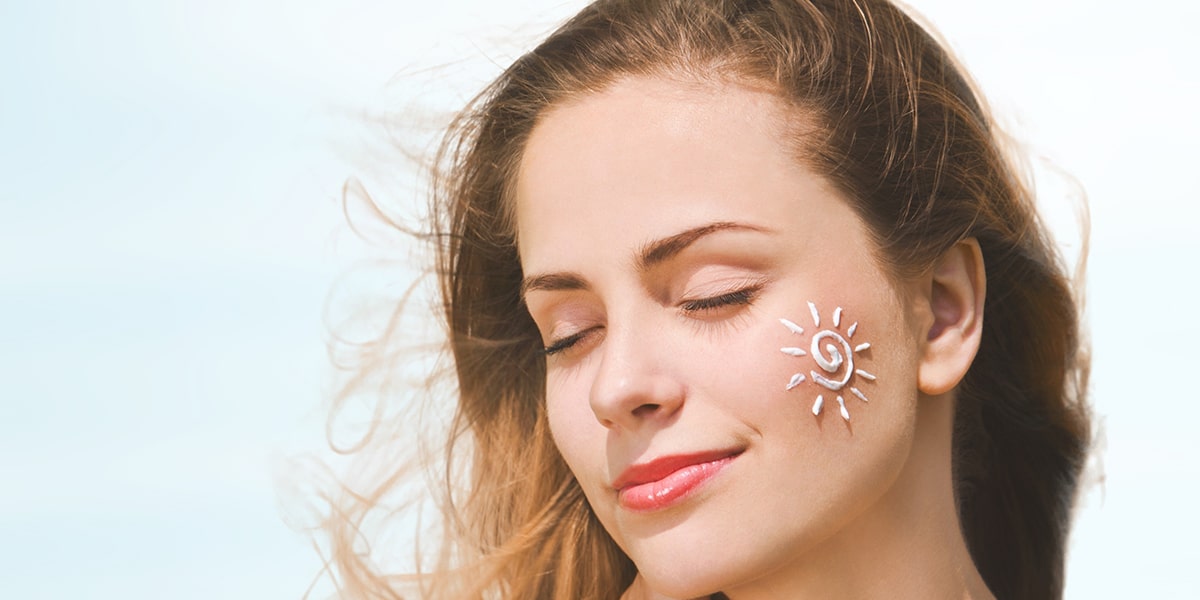In our quest for healthy and radiant skin, one crucial element often overlooked is sun protection. As we delve into the comprehensive guide on “Sunscreen for Skin,” we’ll navigate through the intricate details of sunscreens, shedding light on their importance, application techniques, and dispelling common myths.
Importance of Sunscreen
Sunscreen acts as a shield, preventing sun damage, premature aging, and reducing the risk of skin cancer. It’s not just a cosmetic choice; it’s a vital aspect of maintaining skin health.
How UV Rays Affect the Skin
Delving deeper, we explore the different types of UV rays—UVA and UVB—and their implications. Unprotected exposure can lead to serious consequences, including the heightened risk of melanoma. Let’s uncover the science behind UV rays and their impact on our skin.
Choosing the Right Sunscreen
Start by considering your skin type – oily, dry, or sensitive – and opt for a sunscreen formulated to address those specific needs. Check the SPF level; for daily use, SPF 30 is generally adequate, but for extended sun exposure, opt for SPF 50 or higher. Look for a broad-spectrum sunscreen to guard against both UVA and UVB rays. Water-resistant formulas are ideal for outdoor activities.
Additionally, consider your preferences, such as fragrance-free or hypoallergenic options. Making an informed choice ensures your sunscreen not only protects but also suits your individual skincare requirements.
Different Types of Sunscreens
Chemical sunscreens contain organic compounds that absorb UV rays, converting them into heat. Physical sunscreens, on the other hand, use minerals like zinc oxide or titanium dioxide to create a barrier, reflecting and scattering UV rays. Mineral-based sunscreens are often gentler, making them suitable for sensitive skin.
Broadly categorized as either physical or chemical, these sunscreens cater to different preferences and skin needs. Additionally, there are specialized formulations for specific activities, such as water-resistant options for swimming or sports. Understanding these variations empowers you to choose the sunscreen that aligns with your skin and lifestyle.
Applying Sunscreen Correctly
Begin with a generous amount, covering all exposed skin. Don’t forget often overlooked areas like ears and hands. Reapply every two hours, or more frequently if swimming or sweating. Ensure even distribution for effective shielding against harmful UV rays, promoting healthy and protected skin.
Sunscreen for Children
Kids’ delicate skin is more susceptible to sun damage, increasing the risk of skin cancer later in life. Regular sunscreen application shields them from harmful UV rays, preventing sunburn and long-term consequences. Opt for child-friendly, broad-spectrum sunscreens with at least SPF 30, and reapply regularly, especially during outdoor activities. Cultivating sun protection habits from an early age not only safeguards their skin but instills a lifelong understanding of the importance of sun safety, ensuring they can enjoy the outdoors while minimizing potential risks.
Sunscreen Ingredients to Avoid
Not all sunscreen ingredients are created equal. Steer clear of oxybenzone, octinoxate, and homosalate, known for potential harm. Also, be cautious of allergens like fragrances and preservatives. Opt for mineral-based sunscreens with zinc oxide or titanium dioxide for a safer and effective shield against harmful UV rays.
Sunscreen and Anti-Aging
Sunscreen plays a pivotal role in anti-aging skincare. By shielding the skin from harmful UV rays, it helps prevent premature aging, reducing the risk of wrinkles, fine lines, and age spots. Incorporating sunscreen into your daily routine becomes a powerful ally in maintaining youthful and healthy-looking skin over time.
Common Mistakes in Sunscreen Use
One prevalent error is not applying enough, leading to inadequate coverage. Another mistake is neglecting reapplication, especially after swimming or sweating. Additionally, using expired sunscreen or skipping less noticeable areas can compromise the sunscreen’s efficacy.
FAQs
Is sunscreen only necessary on sunny days?
Sunscreen is essential every day, regardless of the weather. UV rays can penetrate clouds, and prolonged exposure contributes to skin damage. Make applying sunscreen a daily habit for optimal skin health.
Can I use the same sunscreen for my face and body?
While some sunscreens are designed for both face and body, it’s advisable to use a specialized facial sunscreen for delicate facial skin. These formulations are often gentler and less likely to cause breakouts.
What SPF level is sufficient for daily use?
For everyday activities, an SPF of 30 is generally sufficient. However, if you spend extended periods outdoors, consider using SPF 50 or higher for enhanced protection against UVB rays.
How often should I reapply sunscreen?
Reapply sunscreen every two hours, especially if you’re swimming or sweating. Even water-resistant sunscreens lose their effectiveness over time, so regular reapplication is crucial for continuous protection.
Can sunscreen prevent vitamin D production?
While sunscreen blocks some UVB rays responsible for vitamin D production, it’s essential to strike a balance. Spending a few minutes in the sun without sunscreen daily can help maintain adequate vitamin D levels.
Are natural or mineral-based sunscreens better?
Both chemical and mineral-based sunscreens have their advantages. Mineral sunscreens are often preferred for sensitive skin, while chemical sunscreens may offer a lighter feel. Choose based on your skin’s needs and preferences.
Conclusion
In conclusion, the journey through the intricacies of sunscreen for skin reveals the indispensable role it plays in our overall well-being. From protecting against UV rays to preventing premature aging and reducing the risk of skin cancer, sunscreen is a skincare essential. By making informed choices and adopting healthy sun protection habits, you empower yourself to enjoy the sun responsibly.
